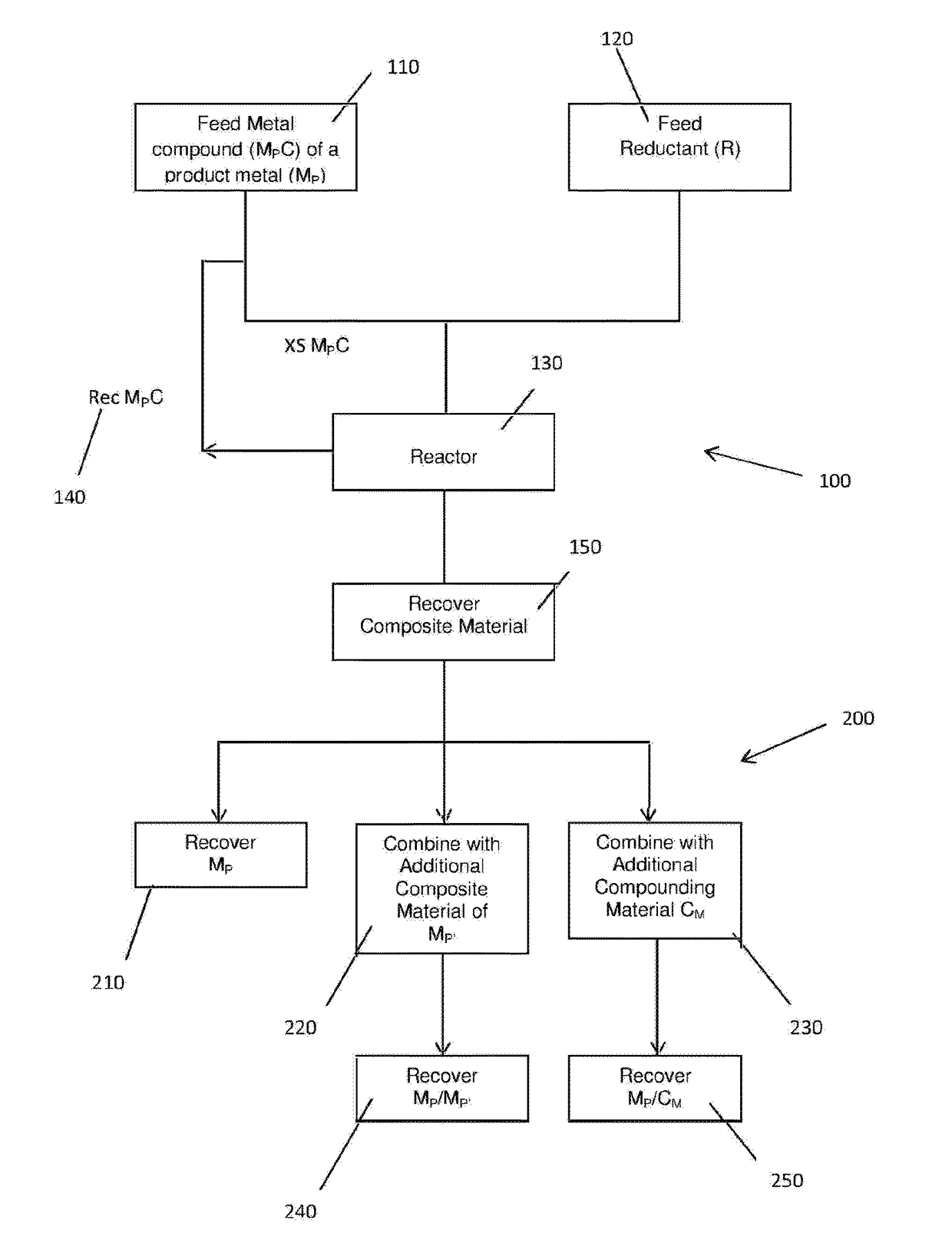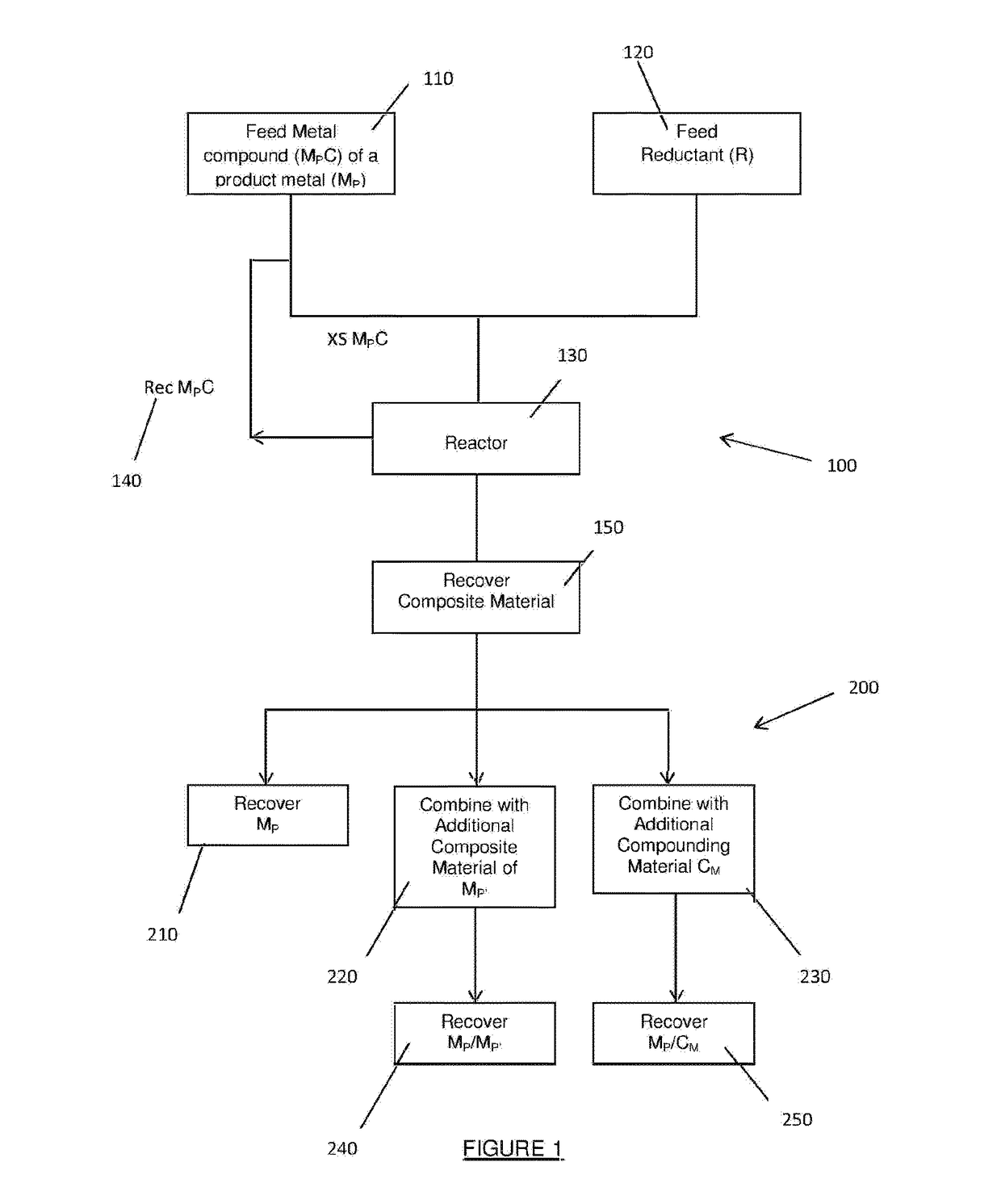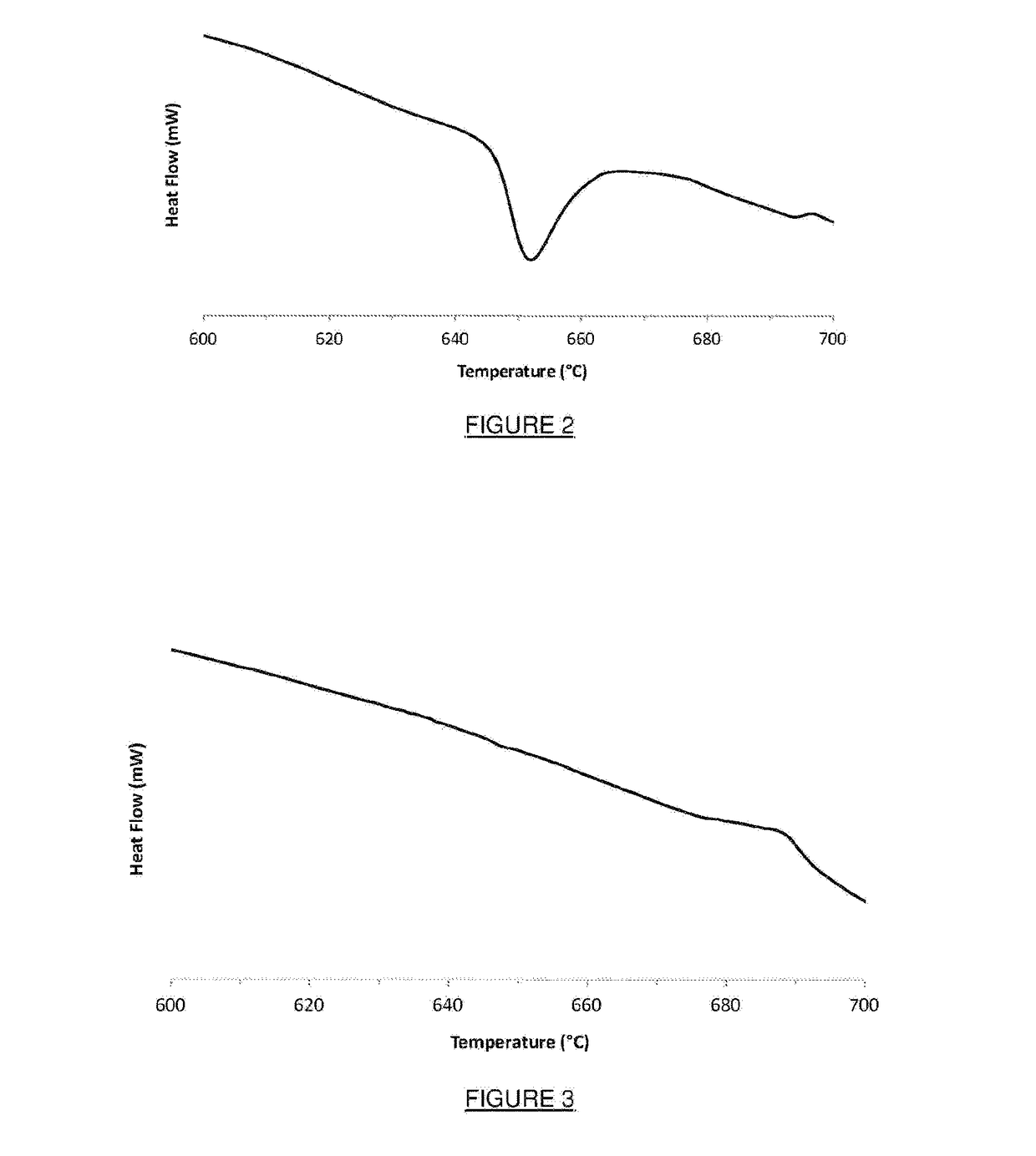Method for production of a composite material using excess oxidant
a composite material and oxidant technology, applied in the direction of improving process efficiency, etc., can solve the problems that large particles of reductant may not be entirely available to be reduced in the prevailing conditions, and achieve the effect of improving crevice corrosion resistan
- Summary
- Abstract
- Description
- Claims
- Application Information
AI Technical Summary
Benefits of technology
Problems solved by technology
Method used
Image
Examples
example 1
n of Titanium Metal Composite in the Presence of Excess Oxidant with Unreacted Reductant Present in the Composite
[0089]A reaction vessel made from stainless steel was purged with high purity argon and heated externally to 680° C. The system was charged with 20 kilograms of titanium composite particles as a seed material. The system was allowed to reach an internal temperature of 655° C. At this point reactant feeds were introduced.
[0090]Titanium tetrachloride was supplied at a rate of 8 kilograms per hour. In this example the reductant phase was magnesium metal, supplied at a rate of 2 kilograms per hour as a finely divided powder conveyed in a low volume of argon gas carrier stream entering the reactor. In these proportions titanium tetrachloride is in excess by approximately 2.5 wt % relative to magnesium as the most electrochemically positive component that could be oxidised in the reactor.
[0091]The addition of the reactants to the reactor increased the temperature in the reactor...
example 2
n of Titanium Composite in the Presence of Excess Oxidant Demonstrating the Minimisation of Unreacted Reductant Present in the Composite
[0098]A reaction vessel made from stainless steel was purged with high purity argon and heated externally to 680° C. The system was charged with 20 kilograms of titanium composite particles as a seed material. The system was allowed to reach an internal temperature of 655° C. At this point reactant feeds were introduced.
[0099]Titanium tetrachloride was supplied at a rate of 6.3 kilograms per hour. In this example the reductant phase was magnesium metal, supplied at a rate of 1.5 kilograms per hour as a finely divided powder conveyed in a low volume of argon gas carrier stream entering the reactor. In these proportions titanium tetrachloride is in excess by 7.5 wt % relative to magnesium that could be oxidised in the reactor.
[0100]The addition of the reactants to the reactor increased the temperature in the reactor consistent with the exothermic natu...
example 3
n of Titanium Composite in the Presence of Excess Oxidant Demonstrating the Formation of Larger Amounts of Sub-Halides
[0107]A reaction vessel made from stainless steel was purged with high purity argon and heated externally to 680° C. The system was charged with 20 kilograms of titanium composite particles as a seed material. The system was allowed to reach an internal temperature of 655° C. At this point reactant feeds were introduced.
[0108]Titanium tetrachloride was supplied at a rate of 7.3 kilograms per hour. In this example the reductant phase was magnesium metal, supplied at a rate of 1.5 kilograms per hour as a finely divided powder conveyed in a low volume of argon gas carrier stream entering the reactor. In these proportions titanium tetrachloride is in excess by approximately 25 wt % relative to magnesium fed into the reactor.
[0109]The addition of the reactants to the reactor increased the temperature in the reactor consistent with the exothermic nature of the reactions, r...
PUM
| Property | Measurement | Unit |
|---|---|---|
| temperature | aaaaa | aaaaa |
| temperature | aaaaa | aaaaa |
| wt % | aaaaa | aaaaa |
Abstract
Description
Claims
Application Information
 Login to View More
Login to View More - R&D
- Intellectual Property
- Life Sciences
- Materials
- Tech Scout
- Unparalleled Data Quality
- Higher Quality Content
- 60% Fewer Hallucinations
Browse by: Latest US Patents, China's latest patents, Technical Efficacy Thesaurus, Application Domain, Technology Topic, Popular Technical Reports.
© 2025 PatSnap. All rights reserved.Legal|Privacy policy|Modern Slavery Act Transparency Statement|Sitemap|About US| Contact US: help@patsnap.com



